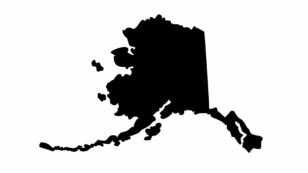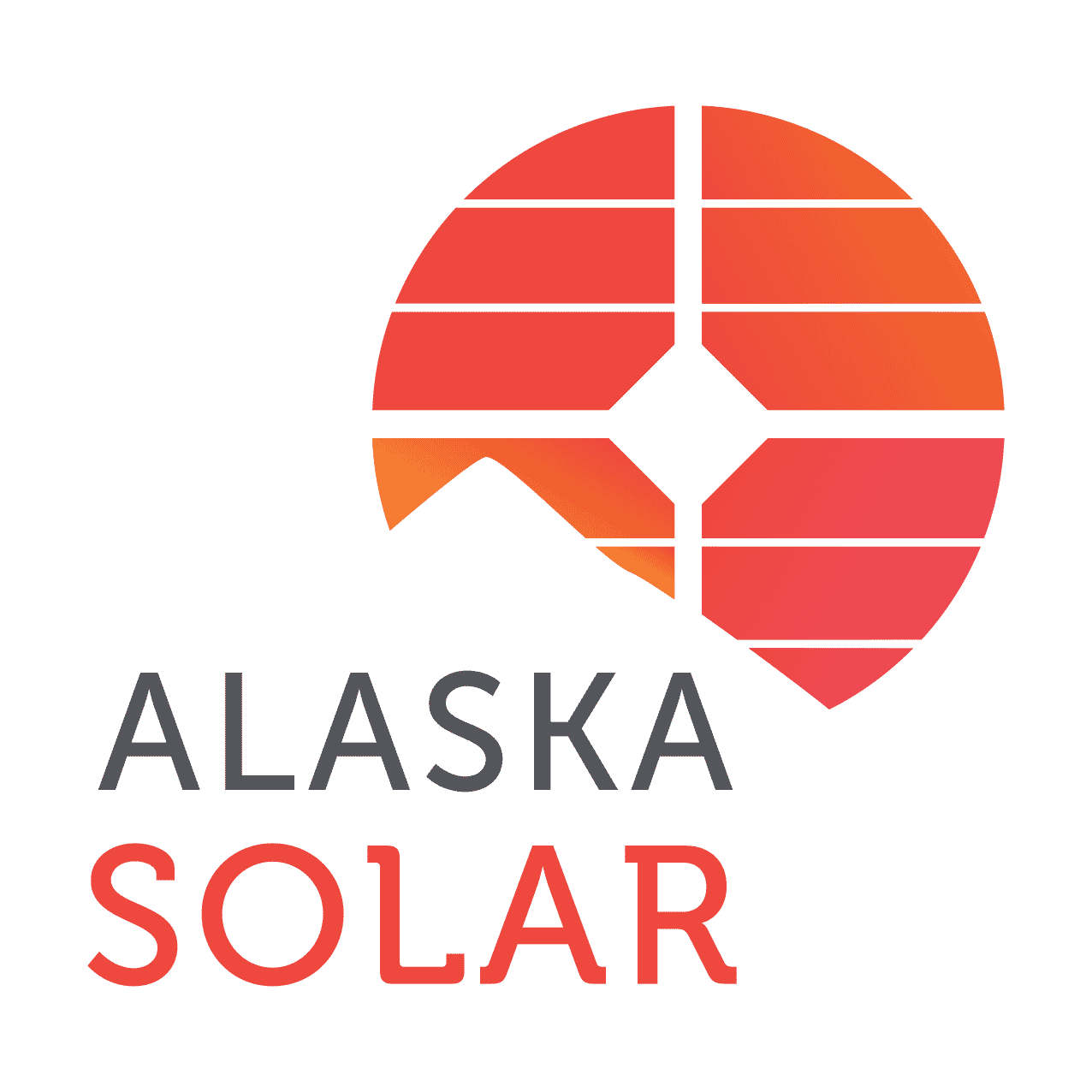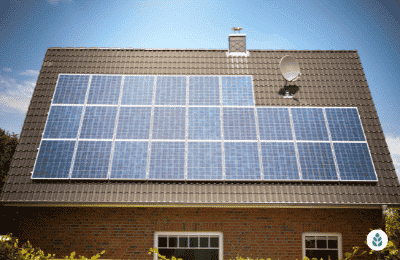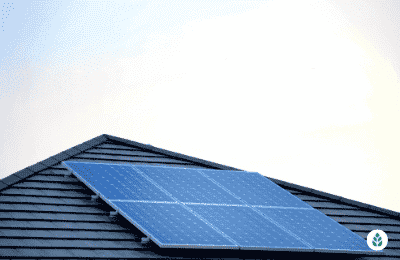
Is Solar Worth It in Alaska? (2024 Homeowner's Guide)
Here’s a quick overview of solar viability in Alaska:
- Alaska ranks 50th in the country for solar installations*
- The average electricity rate is 24.88 cents per kilowatt-hour (kWh)**
- The average solar payback period is 8 years***
- Homeowners are eligible for an excellent net metering program and the federal solar tax credit (ITC)
- The average homeowner saves $41,943 over the lifetime of their solar system***
*According to the Solar Energy Industries Association.1
**Data from the Energy Information Administration.2
***Calculated assuming the system is purchased in cash.
Each product and or company featured here has been independently selected by the writer. You can learn more about our review methodology here. If you make a purchase using the links included, we may earn commission.
Alaska ranks 50th in the country for solar conversions, but the state remains one of the most valuable places to install solar panels. The large majority of homeowners will see a massive return on investment when converting to solar, thanks to the high energy rates and the excellent net metering program. The price of solar equipment is also around $3.13 per watt, making it one of the cheapest states for installing a solar power system.
Below, you’ll find an in-depth expense analysis that can help you decide if solar is right for you and to determine how much solar panels could save you in the long run in Alaska. We’ll also discuss some of the benefits of converting to this renewable energy source and some things you’ll need to consider before, during and after the installation.

Arctic Solar Ventures

Local Service
Average cost
Pros
- Outstanding customer service
- Great warranty coverage
- Includes battery installations
Cons
- Limited brands of solar equipment available
- Slightly limited service offerings
- No leases or PPAs

Alaska Solar

Local Service
Average cost
Pros
- Excellent reputation
- Outstanding customer service
- Includes battery installations
Cons
- Slightly limited service offerings
- Limited warranty coverage
- No leases or PPAs

Renewable Energy Systems of Alaska

Local Service
Average cost
Pros
- Expansive service area
- Great warranty coverage
- Offers products from leading manufacturers
Cons
- No leases or PPAs
- Less personalization than competitors offer
Watch Below: See What An Off Grid Solar Installation Looks Like in Snowy Alaska
How to Figure Out if Solar Panels are Worth It in Alaska
Solar panels will be worth the upfront investment for most Alaska homeowners, but this clean energy solution isn’t ideal for everyone. There are some things you’ll need to think about before you can determine if solar will benefit you and your home. We’ll discuss some of the most crucial factors below.
What’s Your Home Electricity Consumption?
First, you’ll need to consider how much energy you consume on a monthly basis. You can check your electricity usage on your electric bills to see the average over the past few months. Solar panels are more valuable in areas where electricity is expensive or where homeowners have high energy needs. Generally speaking, a monthly usage of over 500 kWh will mean solar is likely a good option for you.
The average energy consumption in Alaska is lower than in most states, second only to Hawaii. The typical monthly energy usage is 552 kWh, meaning many homeowners would be close to the tipping point where solar isn’t worth the investment. However, electric rates are also the third-highest in the country after Hawaii and Connecticut, so most homeowners will benefit from going solar, even if their average usage is a bit below the 500 kWh mark.
How Much Is It To Go Solar in Alaska?
The price of installing solar panels in Alaska depends largely on the size of the system you need to offset your electric bills. The average Alaska homeowner needs a 6-kW system, which is around half the size needed throughout the rest of the United States. At a standard per-watt price of just $3.13, most residents pay around $18,780 to install solar panels or $13,146 after the federal tax credit is considered.
As mentioned above, solar is more valuable in areas where energy is expensive. The high electricity rates in Alaska, combined with the low price of solar equipment, make installing photovoltaic (PV) systems a great investment for most homeowners in the Last Frontier.
What’s the Payback Period for Solar in Alaska?
A relatively reliable way to estimate if solar is worth it for your home is to calculate how long it will take your panels to pay for themselves, which most do if you use a cash purchase or solar loan to acquire them. The time it takes this payoff to occur and your system to become profitable is called the solar panel payback period.

What Are Average Buy-Back Rates in Alaska?
Most states now have a net metering program or energy buy-back policy, which allows you to produce more energy than you use with your panels and get credited by your electric company for the excess. Alaska not only mandates net metering but also sets the buy-back rate at the retail rate, meaning your utility bill will be credited for each kilowatt-hour at the same price you’d pay if you pull a kilowatt-hour from the electrical grid. Of course, this will not work for off-grid systems.
This policy is massively beneficial to Alaska homeowners who pay high rates for electricity, as it greatly improves the opportunity to eliminate electric bills in the state. The net metering policy in Alaska makes solar power a much better investment for most residents.
How Much Sun Does Your Roof Receive?
Solar panels only produce energy when they receive sunlight, so the more sun your roof gets, the more energy you’ll generate and the more valuable your panels will be. Alaska as a whole receives an average of just 126 sunny days per year, which is well below the national average of 205. Some areas of Alaska also experience weeks or even months of total darkness, but the low energy needs of Alaskans and the net metering policy still make solar worth it for most homeowners.
With that being said, there are some individual factors to consider as well. In the United States, south-facing roofs and west-facing roofs receive the most sunlight, so solar conversion might not be right for you if your roof only faces north or east. Additionally, shading on your roof can play a part in how valuable solar panels are for your home, as any obstruction of sunlight from trees or buildings will decrease your access to energy production.
What’s the Outlook on Solar in Alaska?
Alaska isn’t the most eco-friendly state by any means, and the adoption of solar power has been slower than nearly every other state. However, residential solar installations have increased quite a bit in popularity over the past decade, in large part due to advancements in solar technology that have made solar energy a viable option in such a northern area.
Alaska’s solar policies have led the solar market to grow quite a bit in the recent past, and it’s expected to continue to expand in the coming years. The likelihood is that solar conversions will increase in prevalence in the near future, making solar more accessible and even more affordable than it is now.
Benefits of Solar Energy in Alaska
Solar energy is a wonderful option for many Alaskans because of the myriad of benefits converting to renewable energy can bring. We’ll discuss the most significant benefits below and how each could affect your decision to go solar.
Electricity Bill Savings
One of the most substantial benefits of going solar is the savings you’ll enjoy on your electric bills. This upside is particularly important in Alaska, where residents pay more for electricity than in nearly every other state. Solar panels in Alaska typically provide savings that pay back the your solar panel expenses within just 8 years — well below the national average of 12 years — and save an average of $41,943 over the remaining lifespan of the equipment.
By converting to solar, you’ll not only save an average of nearly $42,000 on your utility bills, but you’ll also improve your energy independence and be able to avoid the electricity rate spikes that are expected to continue in the future.
Lower Taxes & Access to Other Incentives
Alaska is a relatively solar-friendly state, despite the fact that solar adoption is among the least impressive in the country. There are solar incentives afforded to Alaskans by the state and federal government that make converting more affordable and appealing. One of the most significant incentives is the federal solar tax credit (ITC), which is a credit to your federal tax liability in the amount of 26% of your total system expense. In Alaska, the ITC averages around $5,634.
There are some additional solar incentives available in Alaska:
- Net Metering: As mentioned above, Alaska mandates net metering at the full retail rate, which allows most solar customers to offset their electric bills, increase their return on investment and decrease the payoff period of their system.
- Local Property Tax Exemption for Renewable Energy Systems: The State of Alaska allows individual municipalities to decide to waive state sales tax on all green energy solutions, including solar power equipment. Depending on where you live, you might be able to save quite a bit on the upfront purchase of your system.
Home Resale Value Increase
One benefit of installing solar panels that many homeowners fail to realize is the bump in property value that is expected. A research study completed by Zillow suggests that solar panels increase home value by an average of 4.1%.4 In Alaska, where the average property value is $349,231, that’s a typical bump of approximately $14,318.5 Notably, this jump in value is higher than the average price of a solar system in Alaska, and it could be even higher in more expensive areas like Anchorage and Fairbanks than in rural Alaska.
It’s important to note that this value increase will not be a benefit you’ll enjoy if you choose to sign a solar lease or power purchase agreement (PPA). Only panels acquired with a cash purchase or solar loan will receive this benefit.
Clean, Renewable Energy
There are some non-financial benefits as well that you’ll enjoy when going solar in Alaska. Most notably, installing panels will reduce your reliance on fossil fuels, helping you reduce pollution and your carbon footprint to help fight global warming. You’ll also become less dependent on your utility company, meaning you won’t be subject to the energy price increases that are expected in the future.
What to Look Out For When Considering Solar in Alaska
Deciding if solar is right for your home is really just the first step to going solar. Throughout the entire installation process, there are some additional things to keep in mind for the best experience possible. We’ll discuss these considerations below.
Upfront Fees
The upfront fees of going solar in Alaska are lower than in most states, but it’s still an expensive home improvement. The price of conversion will be an important factor for any homeowner. You can keep your initial investment down by choosing a no-money-down loan option, opting for more affordable solar panels and avoiding add-on equipment like electric vehicle chargers and solar batteries.
Payback Period

Net Metering Policies in Alaska
Alaska’s net metering policy is outstanding, as it not only mandates that utility companies buy excess energy from solar customers but also that they do so at the full retail rate. Your energy credits will also roll over indefinitely, making it easier for homeowners to maintain $0 energy bills even through the winter when sunlight is less abundant. The specific policy available to you could vary a bit, so be sure to check with your electricity provider before committing.
Pending Policies & Changes to Incentives
The solar industry is relatively young, and adoption is increasing in just about every state. That leaves plenty of room for growth and improvement, especially in areas like Alaska, where solar installations are less prevalent. Policies and incentives could change and improve, so while it’s not beneficial to wait for better incentives or rebates to come along, you should check for updates before you sign any contracts.
Weather & Climate in Alaska
Advancements in solar technology in the recent past have made solar more worthwhile in Alaska, but many homeowners still understandably worry that the excessive snowfall, cloudy days and periods of darkness in some areas will make solar less beneficial in the long run.
While it’s true that the state receives well below the average number of sunny days per year, the high energy rates and net metering policies still allow homeowners to eliminate electric bills even through the winter with energy produced in the summer months. Snowfall and cloudy days will certainly reduce your panels’ efficiency, but snow will keep them clean to maximize production during the sunny weather, and the net metering policies make it possible to offset electricity usage during the cloudy weather.
Solar is also more effective in most cases nearer the equator, but the cold weather in Alaska allows electricity to flow more efficiently, so panels are still considered worth the investment in such a northern state.
Companies Pushing Solar Leases or PPAs
Finally, you should be aware that there are some solar panel installation companies out there that are disingenuous and even try to scam customers out of money. Generally speaking, you should stay away from solar installers that push solar leases or power purchase agreements (PPAs). Often, these companies will advertise “free panels,” but this is really just a marketing tactic to get you to sign a much less beneficial solar lease. Leases don’t boost your home value, don’t let you take advantage of the federal solar tax credit and provide a much smaller ROI than solar loans and cash purchases.
With solar power growing in popularity in Alaska, the risk of running into a company that uses shady business practices will likely increase in the future. It’s best to work only with vetted, reputable solar companies to ensure you have the best experience possible.
Wrap Up: Is Solar Worth it in Alaska?
Alaska is far from the sunniest state in the country, but the high electricity rates and the outstanding net metering policies throughout the state make solar conversion a worthwhile endeavor for most residents. However, installing solar panels isn’t right for every homeowner. Before you commit to this renewable energy source, you’ll want to assess your payback period, the total price of your solar array, your monthly energy bill, shading on your roof and more to ensure your home is a good fit for solar.
We recommend contacting a reputable solar company to help determine if solar is a good option for you. The right installer will not only assess your ROI but will also walk you through the installation process and provide a smooth transition to clean energy.
See also: Find out how much solar power your roof can produce with our solar calculator
Related Topics
- What Are the Best Alaska Solar Companies?
- What Solar Incentives Are Available in Alaska?
- Find Cost Savings on Solar in Alaska
The cost information presented in this article is derived from a comprehensive analysis, incorporating data from multiple industry sources. The average cost per watt per state was calculated based on figures from Consumer Affairs, Energy Sage, and Berkeley Lab’s Electricity Markets & Policy Department. Additionally, monthly energy consumption and the average monthly cost of electricity were sourced from the U.S. Energy Information Administration, ensuring a well-rounded and accurate representation of the information presented.
Frequently Asked Questions
With the popularity of solar in Alaska on the rise, the EcoWatch team frequently gets questions from residents about the process and how to determine if panels are worth the investment. Below are some of the questions we see most often, along with our responses. If you have specific questions that aren’t answered here, reach out to our team of solar experts at solar@ecowatch.com.
The average solar panel payback period in Alaska is just 8 years, which is well below the national average of 12 years. Most Alaskans find that the energy savings their solar PV systems provide them pay off the system expenses in between 5 and 11 years.
However, your payback period could vary quite a bit, depending on numerous factors. Most importantly, you’ll need to consider your monthly energy consumption, how many solar panels your home needs, the sunlight your roof receives, and more. You can use a solar calculator or contact a local solar installer for a more accurate, personalized estimate.
In most cases, yes! In fact, Alaska solar conversions save residents more money than those in nearly every other state. An appropriately-sized solar energy system will save homeowners an average of $41,943 over the lifespan of the equipment, and this is after the system pays for itself.
Yes! Installing solar panels on your home will bump up your property value if you pay for them with a cash purchase or solar financing. Solar leases and power purchase agreements will not boost your home value.
According to estimates from Zillow, your property value will jump up by around 4.1% from solar panel installation, which averages out to an increase of $14,318 in Alaska.
Yes, permits are required for solar panels in Alaska, and they will add a bit to your installation expense. However, they are worth the investment, as they help guarantee that they are installed and connected to the grid safely. Most professional solar panel installers will handle all permitting for you.
DIY solar panel installation is possible in Alaska, but it’s not recommended. Installing a rooftop solar system is very dangerous and can lead to expensive mistakes if you’re not careful. We strongly recommend having a reputable solar company complete the work for you.
Links to nearby State
Comparing authorized solar partners
-
- Outstanding customer service
- Great warranty coverage
- Includes battery installations
- Limited brands of solar equipment available
- Slightly limited service offerings
- No leases or PPAs
A+Outstanding Local Installer
Having trouble deciding? Click below and use our process to receive multiple quotes instead:

 233k
233k  41k
41k  Subscribe
Subscribe 



